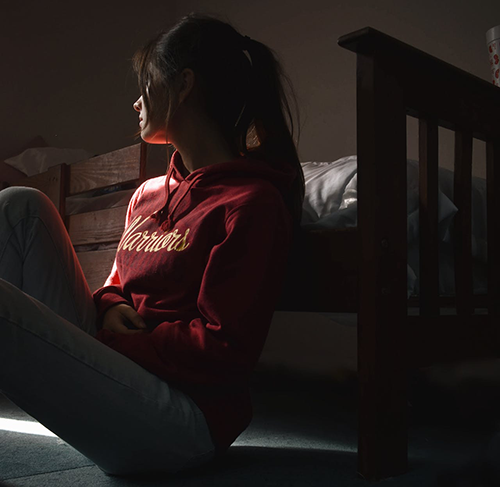(Posted 2024 February)
 Victim blaming happens when a victim or survivor of sexual violence is held partially or completely responsible for the harm they experienced. It is a symptom of rape culture, in which our society minimizes the severity of sexual violence and normalizes attitudes and beliefs that defend acts of sexual violence. Victims of other violent crimes or health crises do not have to explain what they did to become victimized, but victims of sexual violence are too often forced to defend their actions leading up to an experience of sexual violence. This contributes to an environment where survivors who share their stories are blamed, disbelieved, and shamed.
Victim blaming happens when a victim or survivor of sexual violence is held partially or completely responsible for the harm they experienced. It is a symptom of rape culture, in which our society minimizes the severity of sexual violence and normalizes attitudes and beliefs that defend acts of sexual violence. Victims of other violent crimes or health crises do not have to explain what they did to become victimized, but victims of sexual violence are too often forced to defend their actions leading up to an experience of sexual violence. This contributes to an environment where survivors who share their stories are blamed, disbelieved, and shamed.
“If someone is hospitalized for having a heart attack, we don’t show up at the hospital and say, ‘You should’ve eaten healthier,’” says Debra Miller, youth and education coordinator with Domestic and Sexual Violence Services. “But we do this to survivors of sexual violence all the time.”
Victim blaming can delay survivors’ healing and lead to self-blame, anxiety, post-traumatic stress disorder, depression, guilt, and suicidal thoughts. It can also make it less likely for survivors to report or seek support, care, and treatment. Even though sexual violence is quite common, the majority of sexual assaults are never reported.
Why Do People Blame Victims?
The just-world theory says people believe the world is generally a just and fair place. So, when something bad happens to a good person, we tend to blame the victim so we can separate ourselves from them and maintain our just-world view. This lets us tell ourselves nothing bad will happen to us. The problem with this theory is that it ignores the fact that people who cause harm are to blame, not victims.
One recent study looked at factors that increase the likelihood of victim blaming. It found four major factors for this phenomenon:
- Traditional gender role endorsement: People who have restrictive beliefs about women’s roles and rights are more likely to blame the victim. There’s also a correlation between benevolent sexism (attitudes that suggest women are lower in status and need men’s protection) and victim blaming.
- Presence of drugs and alcohol: 11 out of the 16 studies that included intoxication level found victims who are intoxicated are blamed more often than sober victims for an acquaintance rape. Conversely, the more drunk the person committing the sexual assault is, the more their behavior is excused.
- Appearance: If observers think victims are wearing revealing clothing, they are more likely to blame the victims for their assault. A common misconception is victims who wear revealing clothing are provocative and asking for it.
- Media and sexual objectification: Media often depicts women as sexualized objects, portrays sexual aggression as normal behavior, eroticizes sexual dominance, and perpetuates rape myths, all of which legitimizes sexual violence and can contribute to victim blaming.
“Within this culture of victim blaming, women are told to change their own behavior in order to avoid being assaulted or raped. Women are told repeatedly to dress less provocatively, drink less alcohol, and not put themselves in risky situations. This proliferates the belief that victims are at fault when they are attacked and leads to a lack of accountability” for those who cause harm, wrote the authors of “Changing the Culture of Victim Blaming,” a report from the Women’s Health Research Institute at Northwestern University.
Tips to Combat Victim Blaming
We can all help stop victim blaming by following these tips:
- Believe survivors when they share their story instead of blaming them, and let them know what happened to them is not their fault.
- Speak out against jokes about sexual violence and comments that blame the victim.
- Speak up when others are practicing behavior that is sexist, racist, homophobic, transphobic, or misogynistic.
- Challenge your own ideas about gender norms and roles. Call out stereotypes and harmful language directed at women.
- Hold people who cause harm responsible for their actions.
- Be an active bystander:
- Direct: Intervene directly with the person doing the harm or the person being targeted.
- Distract: Create a diversion to distract either party from the situation to interrupt the harmful behavior.
- Delegate: Bring in another person to intervene such as a friend, a trusted adult, or a person of authority.
If you or someone you know is experiencing interpersonal violence, call the Domestic and Sexual Violence 24-Hour Hotline at 703-360-7273 for resources and support. If you are in immediate danger, call 9-1-1.
This posting is part of the Department of Family Services' Community Corner where you’ll find timely information about upcoming events, parenting and wellness tips, programs and services, and more! Share these helpful posts with your friends and family. Don't miss out on future postings! Sign up today!

